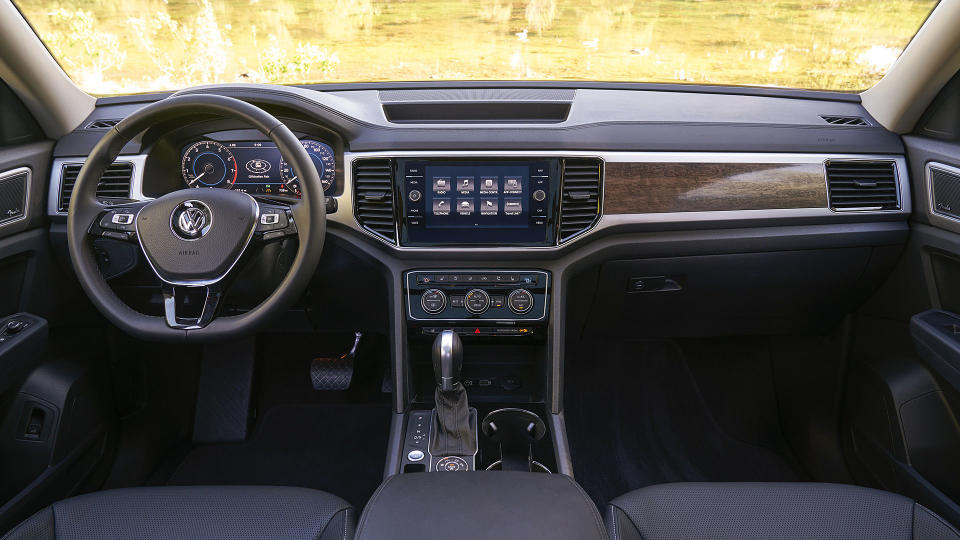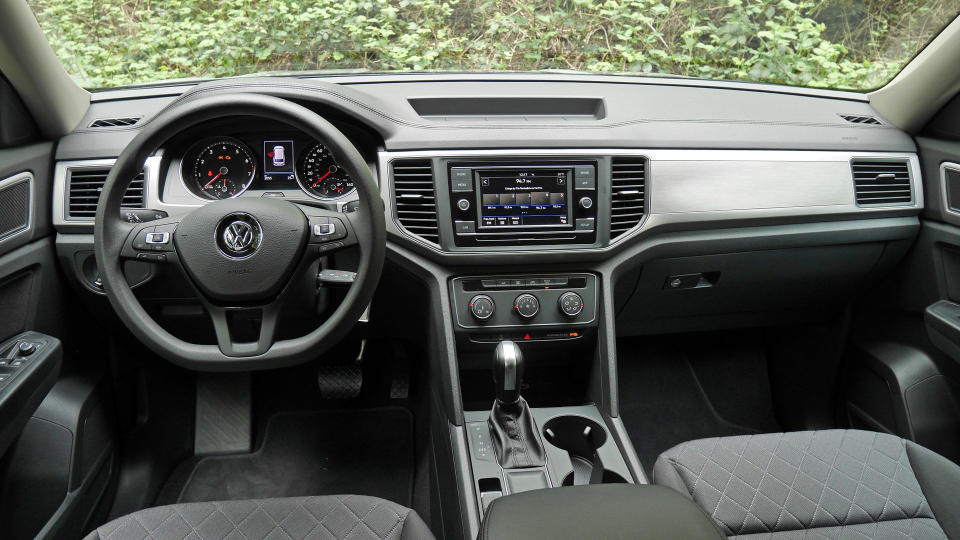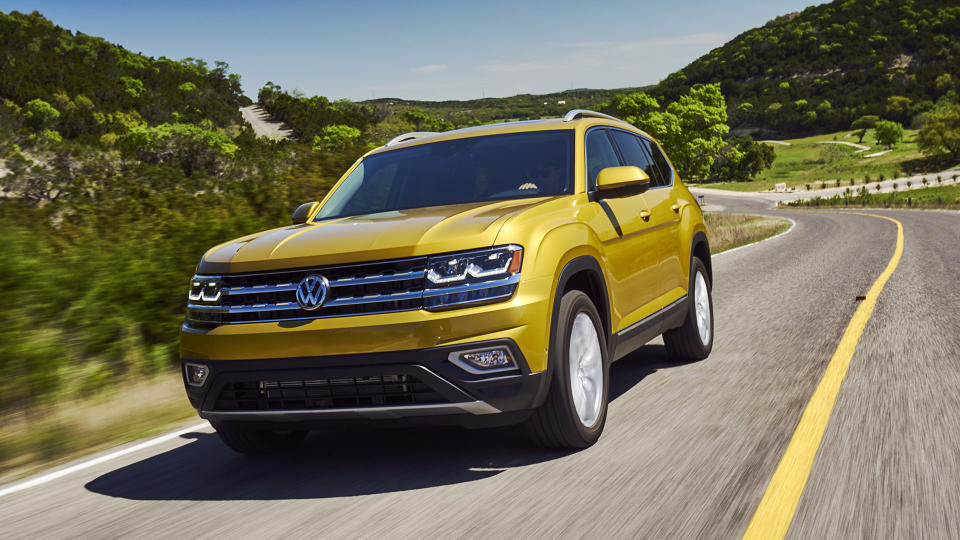2019 Volkswagen Atlas Review and Buying Guide | It's a big deal. Literally, it's huge

See Full Image Gallery >>
If you're looking for a three-row family crossover that boasts a ton space at a reasonable price, the 2019 Volkswagen Atlas needs to be on your list. The interior is enormous, boasting enough passenger space to comfortably fit even 6-footers in all three rows. There should even be enough room for their luggage, which is rare. At the same time, the Atlas is competitively priced, well-equipped and boasts an industry-best six-year/72,000-mile warranty.
In other words, the Atlas does a great job of providing the basics for a growing family. In fact, we think it represents the best value in its most basic form. When the price rises, you're more likely to notice its sub-par interior quality, dull design, underpowered engines and unusually springy ride. It's certainly one to consider, but also not a class leader.
What's new for 2019?
Every Atlas now comes standard with forward collision warning with pedestrian detection and automatic emergency braking, plus blind-spot warning, automatic LED headlights and automatic wipers. The SE now includes tri-zone climate control, while the SEL gets Volkswagen Digital Cockpit, integrated navigation and a heated steering wheel standard. There are also two new trim levels, SE R-Line and SEL R-Line, which are effectively appearance packages.


What's the interior and in-car technology like?
Interior materials and overall ambiance are a little disappointing. There is typically austere German design and then there's just plain – the Atlas skews toward the latter. That's especially true in the lower trims, but even swapping out the S and SE's silver plastic accent trim (pictured right) for the unusual wood-like substance of the SEL (pictured left) doesn't snazz things up enough. The quality of plastics, particularly on the center console, is worse than what you'd find in rival SUVs. Upmarket interiors used to be a Volkswagen trademark. Today, it's space and value, which might be fine for many shoppers.
In-car technology is a better situation. Even the base Atlas S we tested includes Apple CarPlay and Android Auto plus a touchscreen that's easy to use and see, if a bit small at 6.5 inches. There's only one USB port, however. Stepping up to the SE trim adds an extra three USB ports, satellite radio and an eight-inch touchscreen with effectively the same interface as the 6.5-inch one. That's the infotainment situation for all the upper trim levels, though the SEL does boast the Volkswagen Digital Cockpit that replaces the standard gauge cluster with one digital display. It can simulate regular gauges, or minimize them to show a large navigation map, audio interface or other display.
How big is it?
The Atlas is enormous. Quite simply, if you need more space than this, you really have no choice but to go with a minivan or a full-size SUV like a Ford Expedition XL. Even the Chevrolet Traverse, which surpasses the Atlas in most dimensions, isn't so much bigger to really matter.
Like competitors, there is a second row three-person bench seat available for an eight-passenger capacity or captain's chairs with a seven-person capacity. We've tested examples with the bench, which is 60/40-split and slides further fore and aft than those of competitors. This allows you to bring children in car seats closer to mom and dad, or free up even more third row legroom. They also allow for a much larger pass through to the third row than other crossovers can manage.
Not only is it easier to get into the Atlas' third row, it is more spacious once you get back there. As we detail in the video above, someone 6-foot-3 has more than enough head- and legroom in the third row. True, you probably won't be stuffing NBA point guards back there, but whoever is in the way back will be less cramped and just generally happier.
As for cargo capacity, as you can see in our luggage test video below, the Atlas' 20.6 cubic-feet of space behind that raised third row allowed us to stow three carry-on roller suitcases, one mid-size check-in suitcase and an overnight bag. That people-to-luggage ratio should be pretty hard to beat in a three-row crossover.
Now, if there's lots of space with all rows raised, it shouldn't be surprising that trend continues when you lower them. With 96.8 cubic-feet of maximum cargo space, the Atlas is only outdone by the Traverse (barely), minivans, and those full-size SUVs.
What's the performance and fuel economy?
Only the front-wheel-drive Atlas S in base trim comes with a 2.0-liter turbocharged four-cylinder engine that produces 235 horsepower and 258 pound-feet of torque. That output arrives earlier in the rev range, meaning it actually feels a bit quicker off the line than the V6 found in all other trims. It's also literally quicker than the range-topping SEL, since the SEL's extra equipment results in a much heftier curb weight.
As for that 3.6-liter V6, it produces 276 hp and 266 lb-ft of torque, meaning both available engines are underpowered for the segment. Like the four-cylinder, an eight-speed automatic is standard, but unlike it, you can specify front- or "4Motion" all-wheel drive.
Fuel economy is 17 mpg city, 24 mpg highway and 19 mpg combined with FWD and 17/23/19 with AWD. Those figures are low for the segment. The 2.0T engine is average at 20 mpg city, 26 mpg highway and 22 mpg combined, but again, it too is underpowered and also only available on the base S with front-wheel drive.


 Yahoo Autos
Yahoo Autos 

